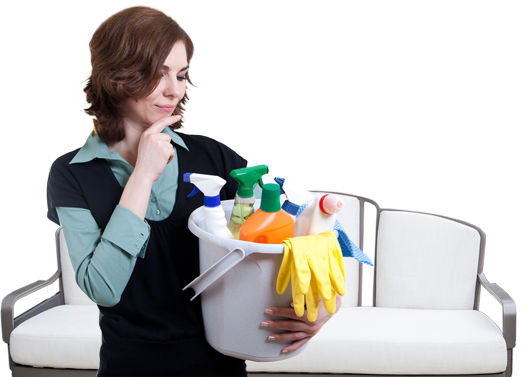Discover the Best Practices for Pristine Windows
Posted on 14/06/2025
Discover the Best Practices for Pristine Windows
There's nothing quite like sparkling, crystal-clear windows to make a home or office feel bright, welcoming, and well-maintained. However, achieving and maintaining those perfectly clean panes often seem like a challenge. Whether you're cleaning residential windows or managing large commercial buildings, applying the right techniques ensures not just aesthetic appeal but also extends the lifespan of your glass. In this comprehensive guide, we'll reveal the top window cleaning tips and best practices to help you achieve pristine windows with minimal effort. Let's dive into the secrets for streak-free, spotless glass!
Why Clean Windows Matter
Regular window cleaning extends beyond mere visual appeal. Here are some reasons why maintaining clean windows should be a priority:
- Enhances home and office aesthetics
- Improves natural light entry, reducing energy costs
- Prevents glass degradation and prolongs window life
- Boosts curb appeal and overall property value
- Promotes a positive, healthy environment
Now, let's discover the best practices for achieving immaculate windows every time you clean.

Essential Tools for Impeccable Window Cleaning
Before you start scrubbing, gather the right tools. The proper equipment can make a world of difference in both efficiency and results. Here's a checklist of must-have supplies for pristine window cleaning:
- Squeegee with a replaceable rubber blade
- Soft microfiber or lint-free cloths
- Bucket (preferably with clean water and gentle cleanser)
- Non-abrasive scrubber or sponge
- Extension pole for high or hard-to-reach windows
- Scraper for sticky residue (use with care to avoid scratching glass)
- Eco-friendly window cleaning solution or DIY vinegar mix
- Protective gloves for sensitive skin
With these tools at hand, you're ready to tackle your window cleaning tasks like a pro.
Step-by-Step Guide to Spotless Windows
Cleaning windows isn't just about wiping glass--it's a careful process. Follow these expert best practices for streak-free windows:
1. Choose the Right Time
Timing is key. Clean windows on a cloudy day or when the glass is cool to the touch. Cleaning under direct sunlight can cause cleaning solutions to dry too quickly, leaving streaks behind.
2. Prepare the Area
Remove curtains, blinds, or obstacles around windows. Lay down towels or a drop cloth to catch drips and protect your floor.
3. Dust Before You Wash
Before cleaning the glass, use a dry microfiber cloth or brush to dust the window frame, track, and sill. This step prevents dirt from turning into a muddy mess when water is applied.
4. Apply Your Cleaning Solution Generously
Soak your sponge or scrubber in your chosen window cleaning solution and apply to the glass. Coverage should be even but not excessively wet to avoid drips.
5. Scrub Gently in Circular Motions
Work from the top down, gently loosening grime, fingerprints, and other residues.
6. Master the Squeegee Technique
- Angle the squeegee correctly: Start at the top and work your way down, pulling horizontally for large windows or vertically for narrow panes.
- Wipe the blade after each pass to avoid streaks.
- Overlap each stroke slightly to ensure all soapy water is removed.
7. Buff to a Shine
Use a clean, dry microfiber cloth to buff away any remaining streaks along the edges or corners. For smaller windows, a crumpled piece of newspaper offers a classic trick for a glossy finish.
8. Don't Forget the Window Frames and Sills
Wipe frames and sills with a damp microfiber cloth. For stubborn dirt, use a soft brush and a mild detergent. Dry thoroughly to prevent mold or water damage.
Top Window Cleaning Techniques and Tips
Use the Right Solutions
Commercial window cleaners deliver impressive results, but DIY solutions offer effective, eco-friendly, and budget-friendly alternatives. Try mixing:
- One part white vinegar with one part water for an all-natural degreaser
- Two tablespoons of dish soap in a bucket of warm water for tough grime
Always test your cleaning solution on a small, hidden spot first to ensure it doesn't damage the glass or frame finish.
Avoid Common Window Cleaning Mistakes
Even seasoned DIYers make some classic missteps. Here's what to avoid if you're striving for pristine, streak-free windows:
- Using paper towels: They leave lint and can cause streaks--opt for microfiber instead.
- Skipping the dusting: Residual debris can turn to sludge when wet.
- Spraying too much solution: Excessive liquid can seep into frames and cause water spots or damage.
- Not changing water frequently: Dirty water re-deposits grime on your glass.
- Ignoring safety for high windows: Use stable ladders or extension tools as needed; never compromise safety.
Cleaning Different Types of Windows
Different windows demand different care:
- Double-hung windows: Tilt inward for easy cleaning of outside panes
- Sliding windows: Remove the pane if possible for full access
- Casement windows: Open wide, support the sash, and clean edges
- Skylights and high windows: Use telescopic tools or hire professionals if necessary
- Decorative or leaded glass: Use a gentle cleanser and minimal water to protect delicate details
Professional vs. DIY Window Cleaning--Which Is Best?
While DIY window cleaning is entirely feasible for most, professional cleaners provide several advantages, especially for multi-story homes, hard-to-access windows, or commercial properties:
- Expertise and efficiency
- Access to professional-grade equipment and solutions
- Reduced risk of injury from heights
- Comprehensive cleaning, including screens and tracks
If you decide to hire a professional, check for insurance, experience, and customer reviews to guarantee results and safety.
Frequency: How Often Should You Clean Your Windows?
Your environment and location can influence how often you need to clean. For most residential settings:
- Every 3-4 months for exterior windows
- Twice a year for interior windows
In urban areas with more pollution, cleaning frequency may need to increase. Businesses and storefronts often require monthly or even weekly window cleaning to maintain a fresh appearance.
Weather-Proof Window Cleaning--Tips for Every Season
Seasonal factors can affect how you clean:
- Winter: Use lukewarm (never hot) water if cleaning in cold weather. Keep tools inside to warm up between panes.
- Spring: Target pollen, dust, and rain spots that accumulate post-winter.
- Summer: Clean early or late in the day to avoid rapid evaporation and streaks.
- Fall: Remove leaves and debris from sills and tracks before rain sets in.
Advanced Tips for Flawless, Pristine Panes
- Invest in quality tools: Replace squeegee blades often and use fresh microfiber cloths.
- Clean windows in a consistent pattern: Start at the same corner and follow the same motion on each pane. This ensures no spots are missed.
- Address stubborn spots: For mineral deposits or hard water stains, use specialty cleaners or a paste of baking soda and vinegar. Gently rub and rinse thoroughly.
- Polish with newspaper: The fiber and ink act as a gentle abrasive, leaving glass gleaming with zero streaks.
- Check for damage: Notice any cracks or failed seals? Address them promptly to prevent energy loss or water damage.
Maintaining Your Windows Between Cleanings
Adopt these simple upkeep habits for always-clear windows:
- Wipe fingerprints and smudges immediately with a dry microfiber cloth.
- Keep window tracks and sills dust-free using a hand vacuum or small brush.
- Wash screens separately twice a year. Lightly scrub with soapy water, rinse, and let them dry before reinstalling.
- Address condensation with dehumidifiers to prevent mold and spotty glass.
Eco-Friendly Window Cleaning for Pristine Glass
Want sparkling windows without harsh chemicals? Try these green strategies:
- Homemade vinegar solution: Mix equal parts vinegar and water for an effective, natural cleaner.
- Lemon juice: Not only leaves a fresh scent but helps cut through greasy residues.
- Microfiber cloths: Reduce the need for chemicals thanks to their superior cleaning power.
- Rainwater: For those harvesting rainwater, its purity makes it excellent for rinsing glass without mineral spots.
These practices safeguard both your household and the planet while giving you crystal-clear results.

Troubleshooting: Streaks, Spots, and Cloudy Glass
If you finish cleaning only to find annoying streaks or cloudiness, here's how to fix it:
- Use less cleaning solution next time; too much can dry unevenly.
- Buff with a dry microfiber cloth to absorb remaining moisture.
- Check your water quality; hard water can cause spotting--use distilled water for a flawless rinse.
Conclusion: Make Pristine Windows a Habit
Keeping your windows in spotless, gleaming condition doesn't have to be a tedious chore. With the right supplies, methodology, and a handful of industry secrets, you can enjoy clarity and shine year-round. Make these best practices for pristine windows part of your regular cleaning routine and you'll not only elevate the look of your property but also prolong the life of your glass for years to come. For those big jobs or tricky windows, don't hesitate to hire professional help.
Your journey to brilliantly clean, streak-free windows starts today. Discover the difference that sparkling glass can make--for your home, your workplace, and your mood!





